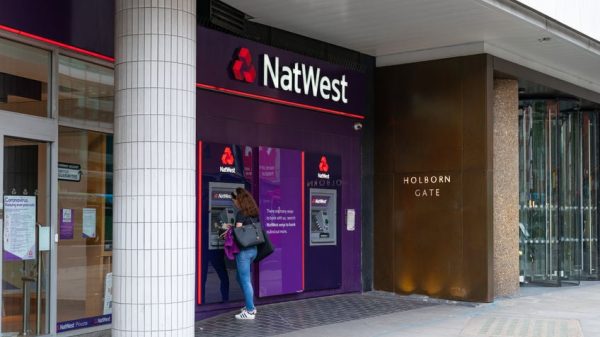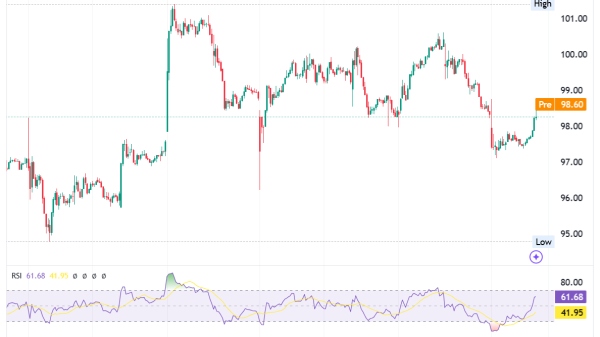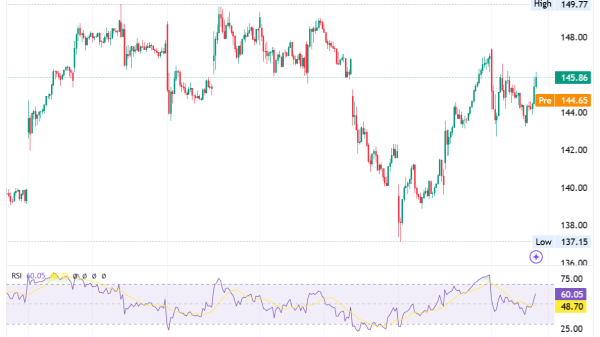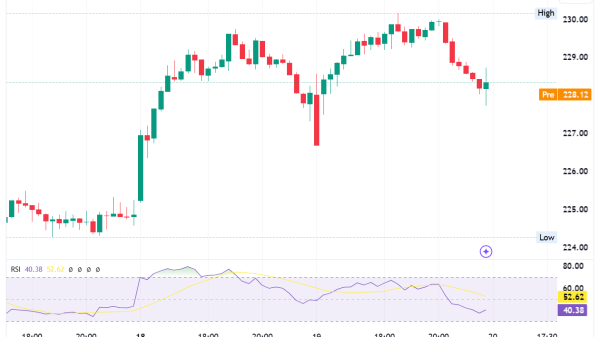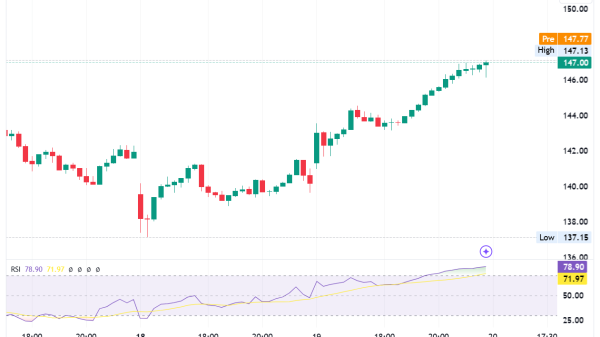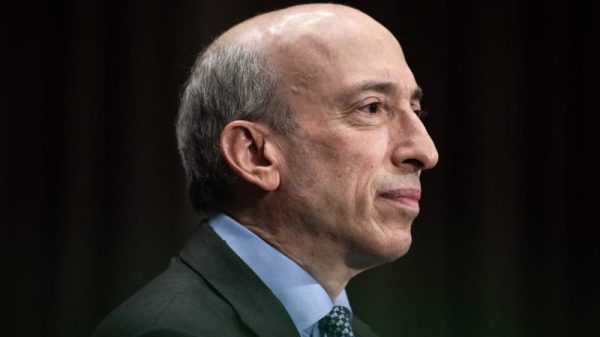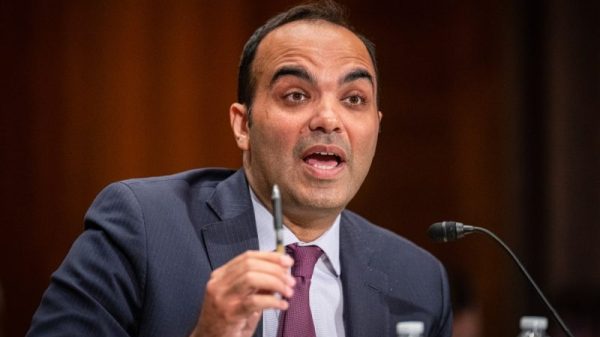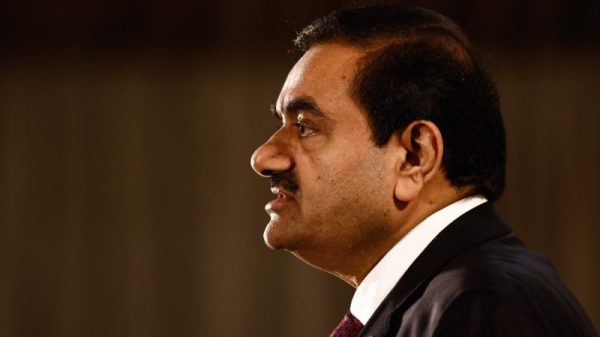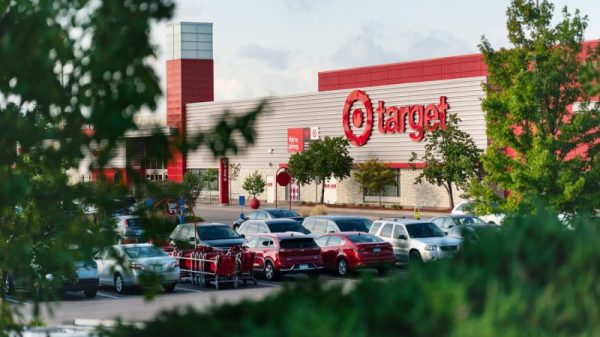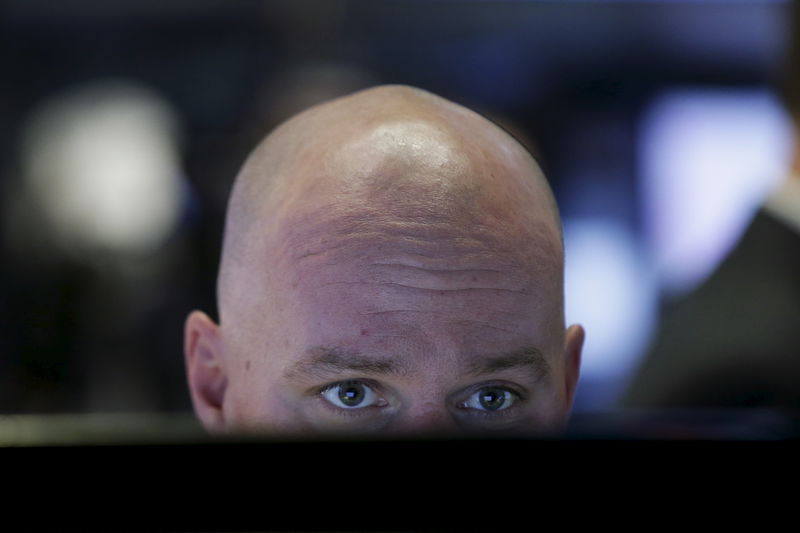
In the third quarter of 2024, X-FAB Silicon Wafers (ticker: X-FAB) reported a 12% year-on-year revenue decline to $206 million, which aligns with the company’s guidance. Despite the dip, the company saw a slight 1% increase from the previous quarter.
CEO Rudi De Winter outlined the financial performance, highlighting the automotive sector’s growth, particularly in China, and the company’s expectations for long-term growth driven by demand in automotive and medical semiconductor markets. However, industrial and medical sectors experienced declines, and the silicon carbide segment saw a substantial drop. The company remains optimistic about future growth despite current market uncertainties.
Key Takeaways
- Q3 revenue of $206 million, within the guidance range but down 12% year-on-year.
- Automotive sector grew, especially in China, but industrial and medical sectors declined.
- Bookings increased year-on-year with a book-to-bill ratio of 1.05.
- Backlog decreased due to long-term orders not included in the count.
- Q4 revenue expected between $195 million and $205 million, with an EBITDA margin of 22% to 25%.
- Full-year revenue guidance revised down, with optimistic long-term growth projections.
Company Outlook
- Long-term growth expected in semiconductor demand, particularly for automotive and medical sectors.
- Q4 2024 revenue projected to be between $195 million and $205 million.
- Full-year revenue guidance adjusted to $822 million to $832 million.
- EBITDA margin forecast for the full year between 23.4% and 24%.
Bearish Highlights
- Revenue down 12% year-on-year.
- Industrial and medical sectors saw significant declines of 41% and 29%, respectively.
- Silicon carbide sales dropped 60% year-on-year.
- Micro systems business declined by 11% due to market weaknesses.
Bullish Highlights
- Automotive segment grew by 8% year-on-year, with a 55% increase in China.
- Bookings rose 4% year-on-year.
- Prototyping revenues increased by 12% quarter-on-quarter.
Misses
- A production slowdown in Malaysia impacted revenue by an estimated $15 million to $20 million.
- Silicon carbide sales and micro systems business experienced significant declines.
Q&A Highlights
- De Winter discussed risk controls and stringent procedures for chemical use in fabs.
- Price negotiations for 2025 indicate moderate price evolution and specific concessions.
- Strong demand for 180nm and 110nm production capabilities justifies ongoing CapEx investments.
- Repayments of prepayments to begin in 2024, with substantial amounts by the end of next year.
- CapEx plans for 2025 include approximately $150 million in Q1, tapering to around $50 million per quarter thereafter.
X-FAB’s third-quarter performance reflects a semiconductor industry facing headwinds, yet the company’s leadership remains positive about the future. The growth in China’s automotive sector and the company’s strategic investments in technology and capacity, despite overall industry slowdowns, position X-FAB for potential recovery and long-term success. The next earnings update on February 6 will provide further insights into the company’s full-year results and outlook.
InvestingPro Insights
X-FAB’s recent financial performance aligns with several key metrics and insights from InvestingPro. Despite the reported 12% year-on-year revenue decline in Q3 2024, the company’s financials reveal some interesting aspects that investors should consider.
According to InvestingPro data, X-FAB’s revenue for the last twelve months as of Q2 2024 stood at $892.8 million, with a revenue growth of 10.6% over the same period. This growth, coupled with the company’s optimistic long-term outlook for the automotive and medical semiconductor markets, suggests potential for future expansion despite current market uncertainties.
An InvestingPro Tip indicates that X-FAB is trading at a low P/E ratio relative to near-term earnings growth. This is supported by the company’s P/E Ratio (Adjusted) of 5.96 and a PEG Ratio of 0.41 for the last twelve months as of Q2 2024. These figures suggest that the stock may be undervalued compared to its earnings potential, which could be of interest to value-oriented investors.
Another relevant InvestingPro Tip notes that X-FAB operates with a moderate level of debt. This financial position could provide the company with flexibility to navigate the current market challenges and invest in growth opportunities, such as the ongoing CapEx investments mentioned in the earnings call.
For investors seeking more comprehensive analysis, InvestingPro offers 8 additional tips for X-FAB, providing a deeper understanding of the company’s financial health and market position.
Full transcript – X Fab Silicon Foundries EV (XFABF) Q3 2024:
Operator: Hello, and welcome to X-FAB Quarter Three 2024 Results Conference Call. My name is Alicia, and I will be your coordinator for today’s event. Please note this call is being recorded. And for the duration of the call, your lines will be on listen-only. However, you will have the opportunity to ask questions at the end of the call [Operator Instructions]. I will now hand you over to Rudi De Winter, CEO; and Alba Morganti, CFO. Thank you.
Rudi De Winter: Thank you for the introduction, Alicia. In the third quarter, we recorded revenues of $206 million, down 12% year-on-year and 1% up quarter-on-quarter. This compares to a guidance of $205 million to $250 million. Revenues in our core markets, automotive, industrial and medical accounted for $190 million, flat compared to previous quarter and down 8% year-on-year. The bookings were up 4% year-on-year with a book-to-bill of 1.05 in the third quarter. The backlog came in at $481 million compared to $517 million end of the previous quarter. The decrease in backlog is related to long term orders worth $114 million for which delivery dates are not yet confirmed at the end of the quarter. These longer term orders for deliveries in the year ’25, ’26 will be added to the backlog in the next months. In the third quarter, our automotive business grew 8% year-on-year. While automotive bookings weakened due to year end inventory adjustments and general destocking, the picture is mixed on the automotive side. Our China automotive business has grown with 55% year-on-year and 38% quarter-on-quarter while EU and US automotive bookings weakened. Our industrial and medical business decreased 41% and 29% respectively. And the current market trends and uncertainties have led to destocking activities and delays across the entire supply chain. However, order intake in the industrial and medical end markets picked up strongly in the third quarter. The consumer communication and computer business bottomed out and it grew 13% compared to previous quarter with a strong booking of book-to-bill just above 2. The CMOS business declined slightly year-on-year. Demand for X-FAB popular 180 nanometer CMOS platform remained healthy. On the new 110 BCD SOI platform technology, several new prototypes were started for future high volume applications. The bookings for 350 nanometer CMOS technology dropped due to inventory corrections. The older 0.6 micron CMOS technologies and 150 millimeter revived after we announced the discontinuation for these technologies as per end of 2026. This decision was taken to support the ongoing transition to the micro systems business in our factory in Erfurt. Customers responded with high order volumes while initiating design activities to work on successor products. The upturn in 0.6 micron business is expected to contribute positively to the revenue from the fourth quarter onwards. The third quarter silicon carbide sales continue to decline in a weak market environment and decreased 60% year-on-year. The visibility remains low. However, the silicon carbide development activities have been encouraging, especially for the next generation technology that comes with improved design performance and a 30% increase in dice per wafer. Combined with the recent reduction in silicon carbide substrate prices, this presents a potential of 40% cost improvement for the final silicon carbide devices enabling new demand. As such, as soon as the silicon carbide market picks up, these new high performance designs will contribute to the future growth of the silicon [carbide] business. In the third quarter, the micro systems business recorded a decline of 11% year-on-year, reflecting current market weakness. Inventory adjustments in the automotive industry and delays in new model launches have particularly impacted the micro systems business in the third quarter. The medical end market, typically a strong driver of microsystem sales, has also been affected by destocking but is expected to contribute positively in the future due to healthy bookings. Quarterly prototyping revenues totaled $23 million, down 14% year-on-year and up 12% against the previous quarter. The fundamental drives for X-FAB business remain intact. These include the growth of semiconductor content in cars and the electrification of everything to drive the decarbonization of our world, and the digitalization of the medical sector to make healthcare more efficient. Our comprehensive set of technologies and expertise enable customers to develop world leading solutions for most important challenges facing our world. Our business is expected to return to robust growth once the current destocking cycle is completed. Let’s move now to the operations update. In the third quarter, we continue to — our capacity expansion programs with a focus on our popular 180 nanometer and 110 nanometer CMOS technologies at the factories in France and Malaysia. The newly constructed clean room at our Malaysian site is ready and the first equipments are moved in. The expansion of the CMOS capacity is also critical to support the micro systems business. Micro systems are based on CMOS wafers to which specialized MEMS layers are added. With the planned discontinuation of the 0.6 micron CMOS business in Erfurt, the site is well on track to entirely focus on the manufacturing of complex micro systems in the future as of 2027. The silicon carbide capacity expansions at our Texas fab, which has been slowed in line with current market demand, will be resumed as soon as the silicon market recovers and long term customer commitments require additional capacity. In addition, we aim to further increase the portion of customers who source their own silicon carbide raw wafers and consign them to X-FAB, resulting in a lower total billing as this is less passed through for substrates sourced by us. Due to both the lower installed capacity and the decision to optimize the portion of customer consigned silicon carbide wafers, the overall silicon carbide revenue targeting for $300 million to $350 million in 2026 is no longer achievable. This will result in changes in the timing and the product mix of our X-FAB growth path going forward. Total capital expenditure in the third quarter came in at $150 million, thereof, about two thirds related to the expansion in our factory in Malaysia. We reiterate the CapEx projections for the full year of 2024 in the amount of about $550 million. Most of the Malaysian CapEx expansion will be delivered by end of first quarter 2025. And from there onwards, there will be a significant drop in the CapEx spending. An operational incident in our factory in Malaysia caused [three] day production slowdown in the third quarter. This has been fully resolved and rework of the affected material is underway. It will, however, shift revenue also from the fourth quarter into the first quarter ‘25 in the range of $15 million to $20 million. Let me now pass the word to Alba for the financials.
Alba Morganti: Thank you, Rudi. Good evening, ladies and gentlemen. We will now move to the financial update. I would like to start this financial section by highlighting that the third quarter, we succeeded to increase quarter-on-quarter gross margin by 14% and EBITDA by 5%, EBIT by 9% while the revenue increased by 1% totalizing $206.4 million. These were within the guided $205 million to $215 million. Our quarterly EBITDA was of $50.3 million with an EBITDA margin of 24.4%. If we exclude the positive impact from revenues recognized over time, the EBITDA margin of the third quarter would have been 23.5%. As usual, our profitability was not affected by any exchange rate fluctuation as our business is naturally hedged. At a constant US dollar euro exchange rate of 1.09, as experienced in the previous year’s quarter, the EBITDA margin would have been 0.1 percentage points lower. Cash and cash equivalent at the end of third quarter remained very healthy and amounted to about $316 million. And to conclude this financial section, I would like to share our guidance for the last quarter of 2024 and give you an update on full year’s perspective. Fourth quarter revenue is expected to come in within the range of $195 million to $205 million with an EBITDA margin in the range of 22% to 25%. The guidance is based on an average exchange rate of $1.1 to euro and does not take into account the impact related to IFRS 15. As you can see, we have adjusted our full year revenue guidance from $860 million, $880 million, down to $822 million to $832 million. In the full year, EBITDA margin guidance has also been adjusted to 23.4% to 24%. And now I would like to give the word back to Rudi.
Rudi De Winter: Thank you, Alba. On the short term, the automotive business is mixed and we see strong growth in China and a weaker market in the other regions due to inventory adjustments impacting portions of our business. The long term outlook remains positive. I’m excited about our new silicon carbide technology modules with great advantages for our customers. I’m confident in the unique technologies we offer and the high growth end markets we are serving, putting us in the right position to address today’s challenges and deliver sustainable growth. As soon as the market begins to recover, our order patterns will change rapidly. With the progress we are making with our capacity expansion programs, we will be able and we will be prepared for our customer needs, especially with the increased capacity on 180 nanometer technology and we will return to solid growth. With this, I would like to conclude and open for questions, Alicia.
Operator: [Operator Instructions] We’ll start with the first question from Michael Roeg from Degroof Petercam.
Michael Roeg: I have a couple of questions. And the first question I have is on the operational incident in Malaysia. Can you elaborate a bit what happened there and what kind of measures you will be implementing to prevent this mishap from occurring again in the future?
Rudi De Winter: This is — it was related to an impurity in a chemical system and so that was recovered after three days. However, it requires a review and rework of material that was in the fab. So yes, of course, there are measures taken to avoid that going forward. Such an event has been very rare, have been using that chemical for our suppliers for 30 years. This is — so we are taking measures that, that doesn’t happen again.
Michael Roeg: Did you have to destroy the entire wafers or could you grind a couple of layers and continue from where the mishap started?
Rudi De Winter: No. Actually, the products are — most of the products are good but it requires kind of additional testing and rework or replacement for some of the others.
Michael Roeg: So not a whole lot was destroyed and the cost that you could not recover. And then this could also happen, of course, in other fabs that you operate. So that also [Multiple Speakers] procedures there?
Rudi De Winter: Well, in the risk controls on those chemicals, and there are tests that are done. So in a factory, we use lots of different chemicals with all extremely tight and ultra pure chemicals. And so a lot of FMEAs and things are in place to avoid things that happen but sometimes you can have an extrusion.
Michael Roeg: And the next couple of questions I have is on price negotiations for 2025. There’s typically something that would be happening, well, in this period of the year. Is it likely that we’ll see a return to the usual price erosion of the past in general? And considering that silicon carbide wafer prices have been sliding quite strongly, is it likely that there will be more price pressure in that part of the business now you’re playing for [Indiscernible] business?
Rudi De Winter: So there is, indeed, on the one hand, we have our three yearly — for quite some business it’s three yearly, LTA was 25 is still included. So the price evolution is moderate but there is, in some cases, we have price negotiations and concessions but are very moderate. On the silicon carbide, that’s a different topic. Yes there, as you know, the substrates are a very substantial cost of the end product and X-FAB doesn’t take any margin on those substrates. So for customers who consign the substrates, they have — of course, they see the saving themselves directly when they source them. For customers who buy through X-FAB, we pass through the savings that we can achieve from those substrates. And so they are biggest — they are substantial.
Michael Roeg: And then following up on that, Q4 is typically the quarter in which some customers do some inventory adjustments and there’s a bit more uncertainty than usual. Do you think that some of these customers are holding off on ordering, especially because they think that next year they can get lower prices than in Q4?
Rudi De Winter: No, I don’t think that’s the main reason. Well, for instance, in China, it’s — as I explained, it is mixed in different regions. So some areas like in China, we’re doing very well. The rest of the world automotive is weaker. What I think what happened is that throughout the supply chain, as well as X-FAB, our customers, but also the OEMs they, over the past years, they have been pushing LTAs and maybe this has resulted into higher inventories. And what we see right now is that — because there is no shortage anymore of chips that suddenly everyone went back to the old habits and try to optimize their inventories and so forth, and that’s where we’re going through. Because worldwide, the car sales is relatively stable and holding up well, it’s not such a big variation. But you do see a shift to China where there is a lot of electric vehicles with a lot of electronics, and so we see also there strong growth. And as you know, in Europe, all the rest of the world, electric vehicles growth is less than planned and this has caused a disruption in the supply chains and corrections that are happening. On top of that, you have the typical end of year inventory optimization that comes on top. So I expect that in the early next year, things to resume there.
Michael Roeg: Do you also see very different behavior from your Chinese customers in automotive who continue to order, whereas European and US customers maybe indeed old enough, or are they all [Multiple Speakers]?
Rudi De Winter: Well, I think that the Chinese are — well, the growth that we see in China is because the China electric vehicle market is growing very strongly. And so they are — I think, they have less inventories, they’re in a growth mode and that’s what we’re seeing in our bookings.
Michael Roeg: Then the final question and then I’ll leave the floor for others, is about prepayments. Can you tell me when will you start supplying wafers to your customers that will be charged against the prepayments? And can you sort of guide for a quarterly rate that will be the case next year?
Alba Morganti: Actually, the system is a bit different. We received prepayments in advance at the beginning of the contract for the full period of the three years, if it’s a three year contract, in the range of 10% to 15% of the total amount. And we have — depending on the contract, there is a general — a fixed amount, which is repaid. So it could — in most of the cases, is quarterly. And the big amounts will start next year in a big portion — end of next year in terms of repayment. Smaller amounts have been already started to be repaid in 2024 but the vast majority will start end of next year. So it’s not linked to production actually.
Rudi De Winter: And it is spread roughly over a period of three years.
Michael Roeg: So three years starting end of next year, that’s the big part. And then how would you define substantial on a quarterly basis, is that $10 million or $20 million?
Rudi De Winter: Well, you can assume that as of second half next year that it is roughly the full amount spread over three years.
Michael Roeg: Clear, divided by 12 quarters then.
Operator: We currently have no more questions coming through [Operator Instructions]. We’ve got now one more question from Guy Sips from KBC Securities.
Guy Sips: Can you elaborate a little bit more on the CapEx for next year? So in the first quarter, what amount do you expect to allocate on the first quarter 2025 on CapEx?
Rudi De Winter: So roughly — I don’t have that well prepared with me, but you can assume maybe something in the range of $150 million for the first quarter. And then the rest of the year, it will drop significantly somewhere closer to $50 million or so per quarter. But that’s — we’re still working on those details but that’s the order of magnitude.
Guy Sips: So that then it would total close to 300 million?
Rudi De Winter: Yes. So with a big chunk in the first quarter and a significant reduction.
Alba Morganti: That’s what we aim, yes.
Guy Sips: And on the Malaysian incidents, how much of this sales do you expect to come in the first quarter? And is that on top of the normal, let’s say, a normal business that you would generate in the first quarter or is that…
Rudi De Winter: So this is — yes, as mentioned, it’s about $15 million to $20 million that is shifted that we probably will not be able to finish this year and that is shifted in the first quarter, but maybe some business from the first quarter might not be shifted to the second quarter. So the exact revenues for the first — it’s not that this business has gone, but it is a delayed delivery.
Operator: We’ve got one more question from Robert Sanders from Deutsche Bank.
Robert Sanders: I just had a few sort of housekeeping questions on the balance sheet. I saw you raised some debt in the quarter. Are you drawing down on the facility, are you just tapping the market? How are you going about raising debt at presently?
Alba Morganti: So we signed a new revolving credit facility on 31st of July this year of another EUR200 million, again, for five years commitment. And so this is on top of the previous one of also EUR200 million that we raised on 1st December 2021. Bilaterally, we also had some sale and leaseback and leasing contracts and a couple of other bilateral facilities that we signed in the recent few months. So this is the current structure. And of course, the majority is to finance the CapEx definitely.
Robert Sanders: And how much of the two revolvers have you drawn down on?
Alba Morganti: We only drawn down about — on the first one, we are in the range of, I think, around 190 million, 94 million maybe. We haven’t started to draw under the second one yet, because this is also mainly to finance the CapEx of Kuching, which we could reduce a bit the needs — well, push out the needs actually. So this is the good news.
Robert Sanders: And on the CapEx, why are you not slamming on the brakes? Every one of your peers is slamming on the brakes on CapEx, but you continue to have the same plan, which is very strange to me. So please help us understand.
Rudi De Winter: Because we have urgent needs for this capacity. So all our — it’s our — the capacity expansion is for 180 nanometer and 110 nanometer but in particularly for 180 nanometer and 180 nanometer BCD on SOI for which we are still in allocation and see strong demand going forward. And so we are really pushing the throttle to get the machines in the fab up and running and producing.
Robert Sanders: Is there another way you can reduce your CapEx cost by going into the secondary market, because there is a lot of idle capacity out there?
Rudi De Winter: Well, these machines that were ordered a year ago or two years ago, we cannot cancel them.
Robert Sanders: And just in terms of the slowdown you — actually, coming back to this, the strange comment you made about the backlog. So on the backlog, you said orders were higher than sales. Your backlog went up sequentially — it went down sequentially. But even though your backlog — your orders were higher than your sales, because you’ve taken out $114 million of orders, which — for which delivery date has not been confirmed. Why have you got unconfirmed orders in your backlog in the first place?
Rudi De Winter: Well, what — that is a technicality. So the way we manage or count our backlog is that the backlog is for orders that are scheduled and with a firm delivery date. And because of this last time buy, there are quite some orders, to be precise, 114 million that as of today, we have not scheduled a precise delivery date. So that will be done in the next couple of months and quarters and some of those will stretch up to end 2026. And that’s — so you could say that the actual backlog is the $481 million plus the $114 million. But technically, because they have not yet scheduled delivery dates, they are not counted in backlog in our internal systems.
Robert Sanders: So they are unconfirmed orders as opposed to confirmed orders?
Rudi De Winter: Yes.
Robert Sanders: And did they just get taken out of the backlog in the last quarter, or why do you put that [Multiple Speakers]…
Rudi De Winter: No. These are orders that came in, in the second and the third quarter that we have never — have not been in the backlog yet.
Robert Sanders: And then just on the automotive backdrop, what have you actually seen from your customers since the sharp slowdown in the automotive industry in the last two months, what has been the impact on your business so far?
Rudi De Winter: Well, we see slower bookings for some — from our European and US customers — automotive customers.
Operator: Thank you. We currently have no more questions coming through [Operator Instructions]. It seems we don’t have further questions, so I will hand you back to Rudi to conclude today’s conference. Thank you.
Rudi De Winter: Thank you, Alicia. With this, I would like then to close the call and hear you all back on the 6th of February for the full year results. Thank you, and have a good evening.
Operator: Thank you for joining today’s call. You may now disconnect.
This article was generated with the support of AI and reviewed by an editor. For more information see our T&C.



